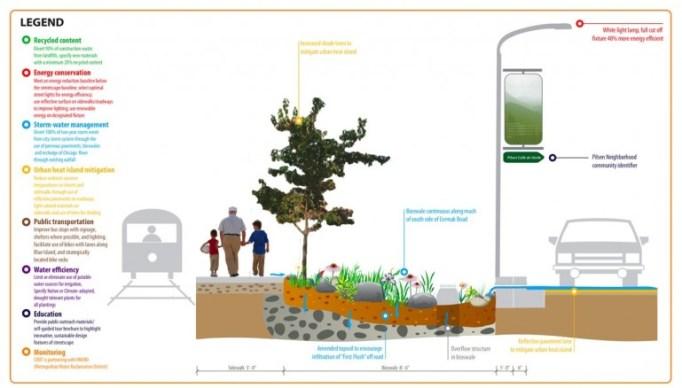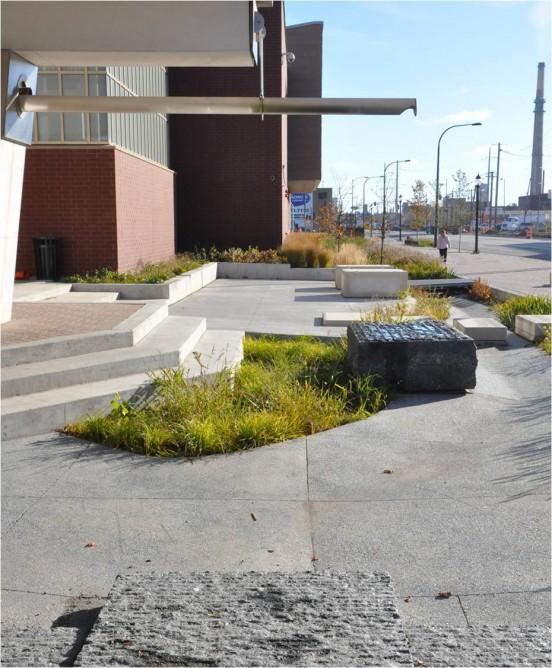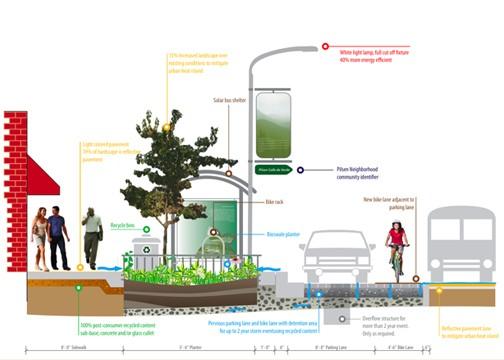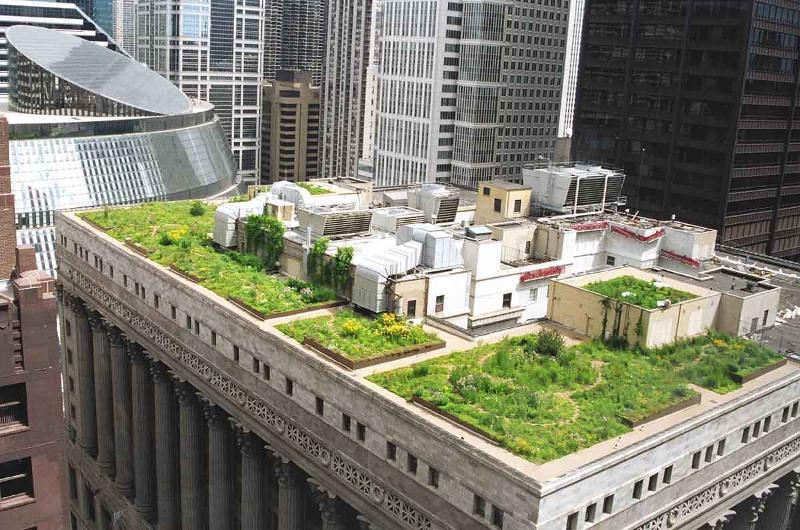
A natural landscape, bicycle lanes, wind powered lighting, storm water diversion for irrigation, drought-resistant native plants and innovative “smog-eating” concrete? Yup, it does exsists. The Cermak road in Chicago recently got the title of “greenest Street in America” according to the Chicago Department of Transport.
Newly opened in October 2012, the street is the first green street to stretch more than two mile and is part of the Blue Island/Cermak Sustainable Streetscape project in Pilsen, which was introduced in 2009 with the aim of reducing overall energy usage by 42 percent.
The project will extend along Cermak and Blue Island all the way to Western in Chicago, and besides being green, it is also cheap! The current 14 blocks cost 21 percent less to build than similar projects Chicago City officials considered, and should also be cheaper to maintain through a set of ‘positive aggressive’ sustainability goals charting from storm water management to material reuse, energy reduction and place making.
One of the coolest parts of the project is the first commercial use of photocatalytic cement for the inside highway lanes. This “smog eating” cement contains nano particles of titanium dioxide and is designed to clean the surface of the road and remove nitrogen oxide (NOx) from the surrounding air through a catalytic reaction driven by UV light. In addition CDOT used 30 percent recycled content in the sidewalk concrete and installed roadways that include reclaimed asphalt pavement, slag, ground tire rubber and reclaimed asphalt.
Also cool is that the project’s water management process uses potable water for any landscape irrigation eliminated and diverts up to 80 percent of annual rainfall from the combined sewer through a combination of the bioswales, rain gardens, permeable pavements, and stormwater features. This includes 95 drought tolerant, native plant species in bioswales and infiltration planters to evaluate their effectiveness in roadside conditions.
Hopefully the project will create a huge talking point for green urban infrastructure, and if this will demonstrate a positive return on investment it could become the blueprint to make even bigger leap for future, so developers, take note!
Source: City of Chicago




